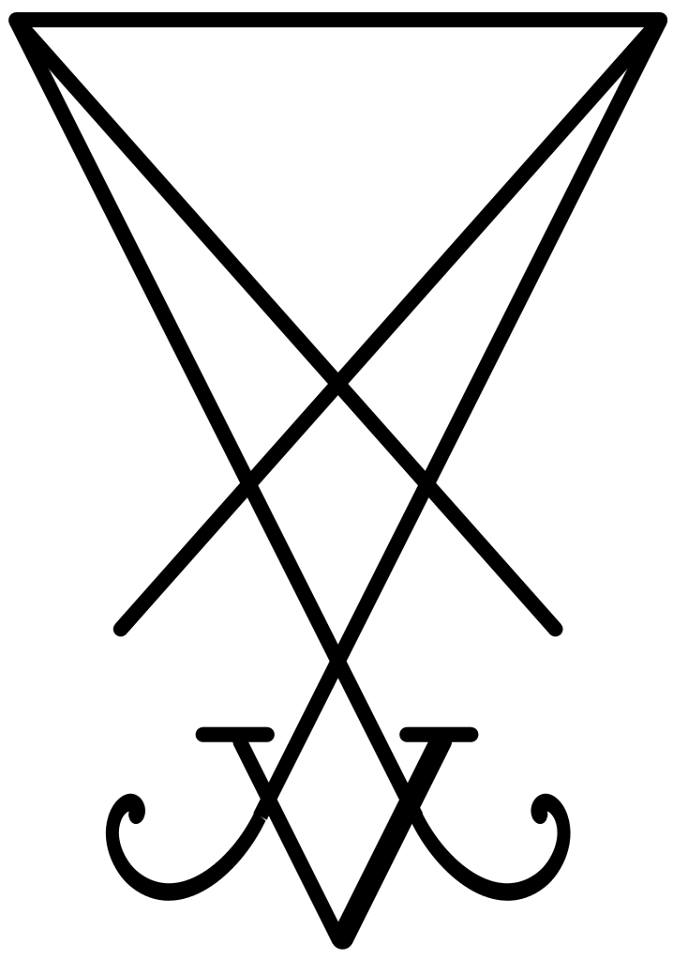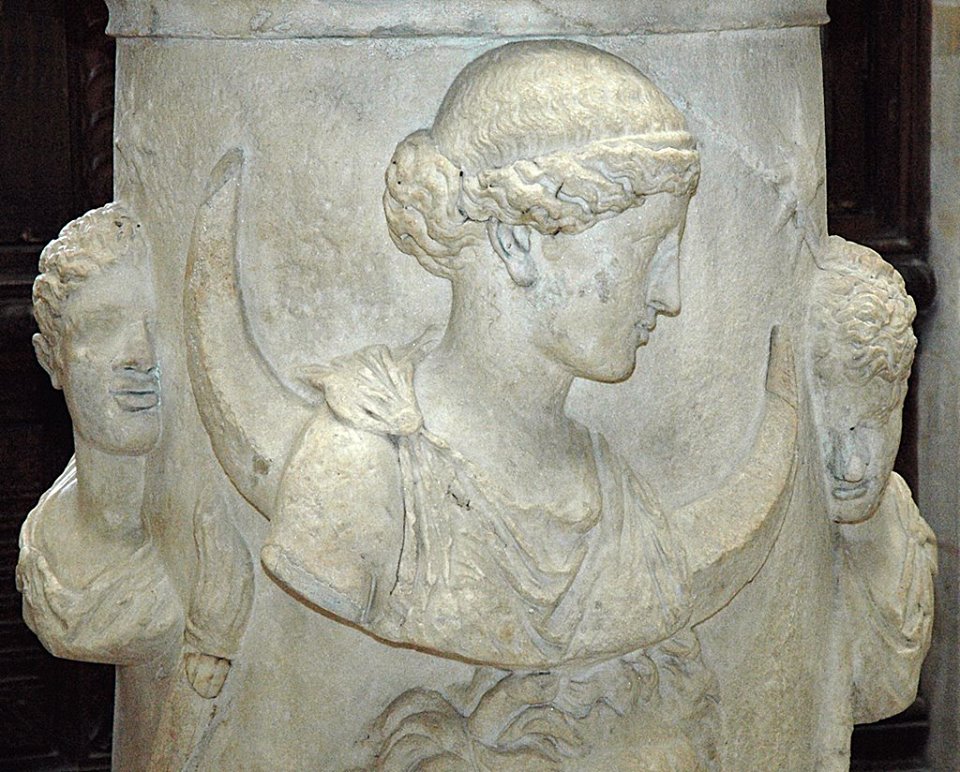
One of Lucifer’s sigils from Grimorvm Verum
Before moving directly on to the subject of Lucifer, I must begin with some meta-theology. In every religious tradition, there is an exoteric and esoteric layer. These terms need no explanation, as any definition of the exoteric-esoteric binary will invariably have baggage that leads to a connotation of own being “better”, “orthodox”, “deeper”, or otherwise “closer to the truth.” The crux of this commentary is the notion that bald esotericism without immersion in and understanding of the exoteric basis from which it extends, is untenable and useless. Merely engaging with esotericism on its own dooms one to the ghettos of self-proclaimed pseudo-attainment.
Now, to move on. There are two kinds of stories that I can tell:
The stories I wish to tell.
The stories I have warrant to tell.
And there are three names I need you to remember:
Phosphorus – Greek
Lvcifer – Latin (I shall use the more common spelling, lucifer)
Helel – Hebrew and Canaanite
The story I wish to tell is that Lucifer really refers to someone way back in history, the first person who discovered fire and led us out of the oppression of the night. This person inspired various myths, such as Prometheus and all sorts of things, and that various traditions’ folklore reflects this figure. In this story, Lucifer, the bringer of light, originates in Sub-Saharan Africa many tens of thousands of years ago, and comes along with us for the ride all over the world. True, it is very hard not to find a culture that has a heroic or godly figure that serves a role as a bringer of light, whether a conquering fire or the brightness of gnosis by which we wake from ignorance. But there just doesn’t seem to be the evidence to support this story, as much as I would like it to be true.
Unlike Satan, a word that came from the Semitic language family, the word Lucifer itself comes from a Proto-Indo-European word: leuk, meaning “to shine” or “flashing light.” In Latin, we have the word Lvx, and in the Irish language (a language related to Latin) and pantheon, we find the god Lugh, of the festival of Lughnasadh. Some use this as tangential evidence for “Lucifer worship” in the folklore of pre-christian Europeans. But this, again, adds unwarranted narrative to a story that just doesn’t support it.
A slightly more plausible story that stretches back even further in history involves the relationship with our local star, Sol, or “The Sun,” and the planet Venus. In many places, Lucifer refers to “bringer of the morning light”; in other words, the morning star, which is Venus. But as we know, the morning star is also the evening star, disappearing into the night only to re-emerge in the morning. It is possible that a long time ago, deep in the verbal record we all carried out of Africa, our ancestors constructed a series of astralotric myths concerning the relationship between the Sun and Venus.
One such story is that the Sun, the inspiration for the earliest gods in all cultures, occupies a throne. And the morning star wishes to ascend to this thrown, only to fail and be cast out again as the evening star. This adds an origin story to the practical aspect of navigating near dawn and dusk using Venus as a lodestar. This story became the basis for a Canaanite myth involving Ba’al and Helel. Ba’al is the Canaanite El who later syncretizes to the Judaic El, as we explored earlier in the course. Helel is the word in the Canaanite and Hebrew languages that means, yes, you guessed it, light-bearer. In this myth, Ba’al sits upon a solar throne which Attar (another name for Helel) as the morning star attempts to take for himself. But Attar fails and becomes the evening star: he falls from grace and descends to the underworld to become its ruler.
Here is another, but wholly implausible, story. This one bears mention as we are discussing Lucifer in terms of having warrant for believing an account is true or not in contrast to wanting it to be true. Freemasonry has a hint of astrolatry similar to the previous account I gave, particularly in the ceremony to become a Master Mason: one symbolically dies (the evening star) and is reborn again (as the morning star). About a century ago, the Taxil Hoax tried to claim that the use of the names Ba’al, Lucifer, and so on in Freemasonry meant that Freemasons worshipped Satan. But unlike how the morning star is the evening star are the same entity (Venus) having different titles, sharing a name does not entail that two entities are the same.
So far we can see the adversarial spirit emerge in the primitive, practical story that gives a mythological basis for how to navigate around dawn and dusk, as well as in the Canaanite story.
But nothing, at least not yet, gives a concrete link between Lucifer and Satan. If these are the only stories we could go off of, it would seem that Lucifer has as much to do with Satan as he does with Prometheus, who in Greek mythology stole fire from the gods to give to humans, or Hekate, a nebulous goddess who rules the cross-roads between the mortal plane and the underworld, and is also called Phosphorous (as one of her titles).
 A 2nd-century sculpture of the Moon-goddess Selene accompanied by perhaps Phosphorus and Hesperus: the corresponding Latin names are Luna, Lucifer and Vesper
A 2nd-century sculpture of the Moon-goddess Selene accompanied by perhaps Phosphorus and Hesperus: the corresponding Latin names are Luna, Lucifer and Vesper
So far this lecture has looked at Greco-Roman and Middle-eastern entities. But independently, the Mesoamerican pantheon includes Quetzalcoatl and Xolotl, twin gods who are also associated with dawn and sunset respectively, as well as the planet venus. It is no coincidence that sun gods are among the earliest and most common gods in religions across the world. What is more puzzling is how often there is a secondary “light-bringer” associated with the dawn and dusk that comes into the picture.
So it should not shock anyone at all that the Canaanite myth of a star that fights the sun for dominance and fails, becomes a politicized insult in the Book of Isaiah, specifically Isaiah 14:12:
“How you are fallen from heaven, O Day Star, son of Dawn! How you are cut down to the ground, you who laid the nations low!”
This became the nexus for the fusion of all these different things.
Again, we can observe that over time, the figure Helel, or Helel Ben Shahar, who was translated as Lucifer (upper case) became the basis for a new myth, that of a fallen angel who tried to stage a revolt in Heaven against god.
Some will say that the term “Morning Star” means Lucifer. Which is fine, I guess, but consider Job 38:
38- Then the Lord answered Job out of the whirlwind, and said:
2 “Who is this that darkeneth counsel by words without knowledge?
3 Gird up now thy loins like a man; for I will demand of thee, and answer thou Me.
4 Where wast thou when I laid the foundations of the earth? Declare, if thou hast understanding.
5 Who hath laid the measures thereof, if thou knowest? Or who hath stretched the line upon it?
6 “Whereupon are the foundations thereof fastened? Or who laid the cornerstone thereof,
7 when the morning stars sang together, and all the sons of God shouted for joy?
So is there more than one Lucifer?
And there are even more places in the Old and New testament where lucifer (lower-case) comes up. One such verse even calls Jesus lucifer, Revelation 22:16:
“I Jesus have sent mine angel to testify unto you these things in the churches. I am the root and the offspring of David, and the bright and morning star.”
But the motif of a falling star remains, as seen in Luke 10:18, which states “I saw Satan fall like lightning from heaven.”
So we can see that lucifer (lower-case) originates as technical term rather than a proper name. Otherwise, the entire project of Judeo-Christianity seems rather contradictory.
It is clear that the Lucifer of Isaiah has more to do with an adversary, even though the specific entity that Isaiah refers to is a Babylonian or Assyrian ruler — an arrogant king who wishes to be godlike but will fall from this hubris. The fact of the matter about Lucifer is that if one looks at the political underpinnings of The Book of Isaiah, Lucifer represents a human reviled by the righteous for his rebellion against the state apparatus compared to Satan, which is an impersonal, chthonic evil.
